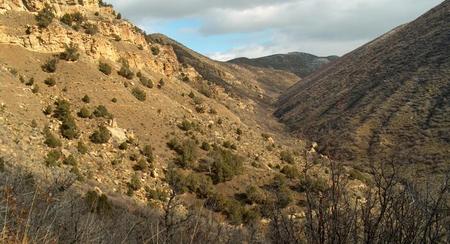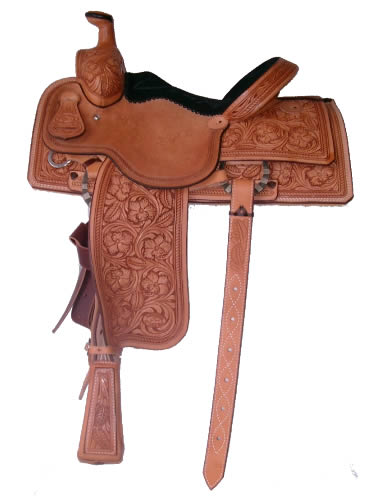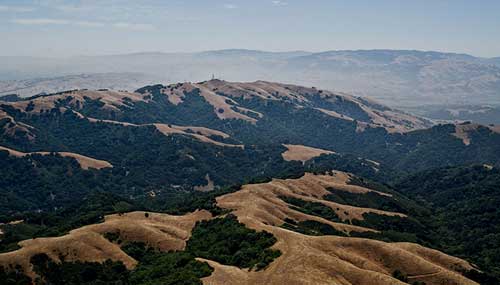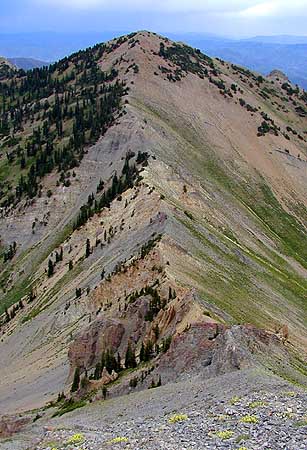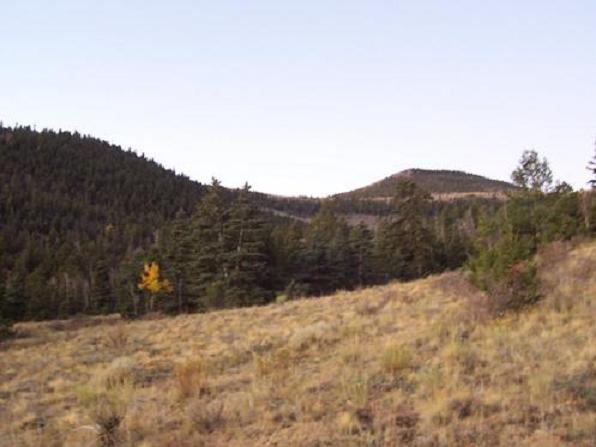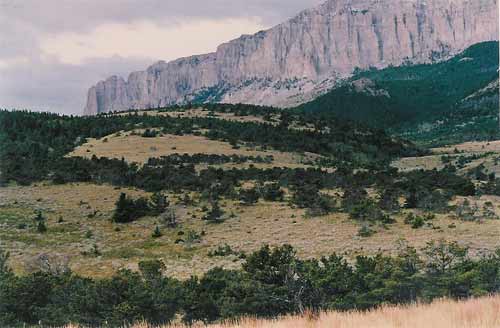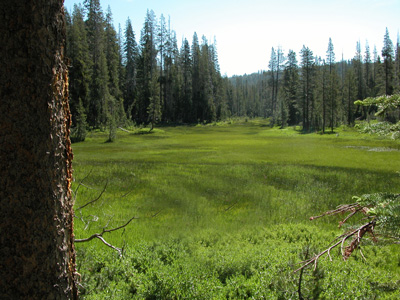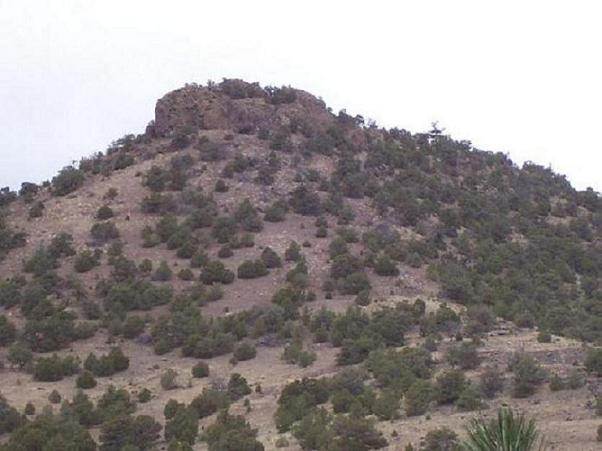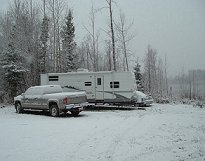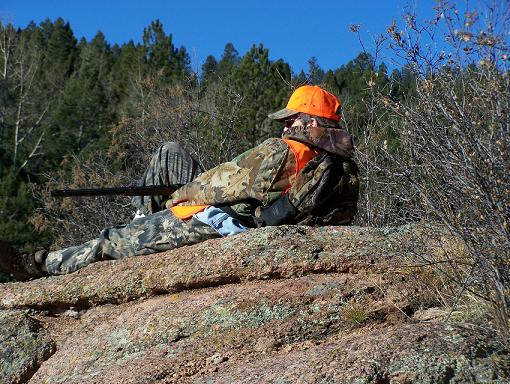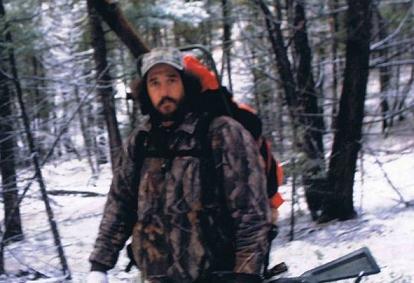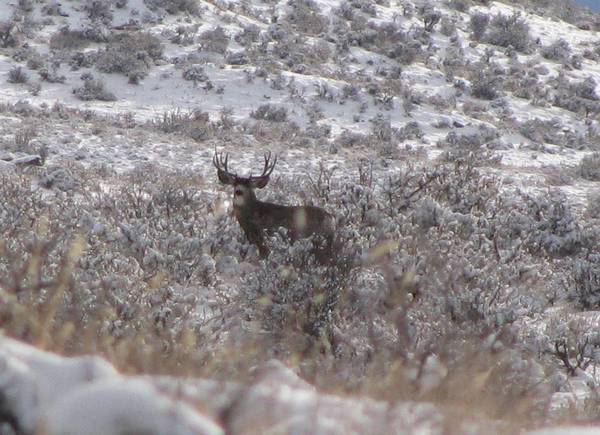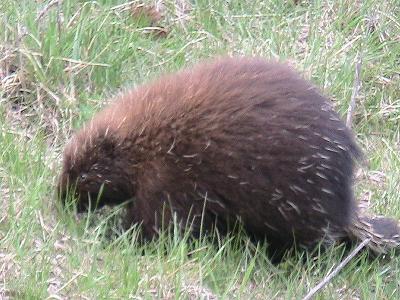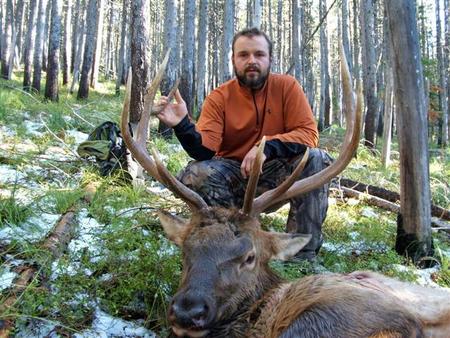SADDLES, SWALES, RIDGES, FINGERS, AND KNOBS
What in the world are saddles, swales, ridges, fingers, or knobs, and what do they have to do with hunting? The answer is…everything! You have probably heard of saddles, you put them on a horse, right? Well, yes, that is one way to use the term, but the focus of this article is topographical features. I know; it sounds boring. Stick with me, and we’ll try and not only make this fun, but educational as well.
If you have read any hunting articles, you have heard of ridges. What is a ridge? A ridge is formed like the top of a house roof, although rarely as straight. So what purpose do ridges serve, where do they take you, and why do you need to know all this in order to hunt effectively? First, ridges serve numerous purposes, chiefly they provide a wall or barrier for wildlife, they require climbing to cross, and therefore can serve as an effective escape mechanism for wildlife fleeing from you, the hunter. Ridges separate drainages. Much like you can herd elk in any direction they want to go, ridges can take you anywhere they are headed. Lets get a bird’s eye view of a mountain to better understand ridges.
In an imperfect world, we are going to have imperfect views, so lets make a rough sketch. Think of a mountain with the peak in the center, or like a wheel hub. Radiating out from that hub at irregular intervals are ridges, or spokes of the wheel. Typically, but not always, the ridges lead downhill from the top of the mountain to the bottom of each drainage. Sometimes a ridge leads to a saddle, or turns into another peak or series of peaks. Small ridges are called fingers. And sometimes a ridge will terminate in a knob. How can ridges help you hunt more effectively? Well…they are a very good way to get a “snapshot” of game movement at a particular elevation or in a certain region. So, they are a natural
scouting tool to put to use when checking out a new hunting area. Ridges can take you places rapidly without causing you to make excessive noise. Because they are generally exposed to wind, there are normally fewer trees, and therefore less undergrowth on ridges, making movement easier and quieter. Ridges place you at a height advantage, but you should remember not to skyline yourself and thus expose your human form to the game animals.
Alright, enough about ridges, lets talk saddles. The saddle we are interested in here is a low point in a ridge, not the kind your outfitter made you sit in. Picture two mountain peaks on the horizon. In between, there is a dip in the ridge connecting those two peaks. We are talking about a (no doubt) HUGE saddle for this example. It may be 400 yards across. What significance does it carry? To the wildlife nearby, its an escape route. To you, the hunter, its an excellent ambush point. Does it have to be a big saddle to qualify as a good spot? No way. In fact, some of the biggest bull elk, buck deer, and wiliest predators use tiny, tree covered saddles to cross between feeding and bedding spots each day.
So how do you know if it’s a good saddle? Well, one method is to cross it and look around. Notice the game trails, are they well defined paths or are there random tracks leading in and out of the saddle? Depending on the time of year, it could be a major migration route, or a dangerous, exposed opening that most game might shy away from.
Lets expand on that thought. Why would the season matter? During your typical western U.S. fall hunting season, fairly nice weather is present, mostly dry, with the occasional snowstorm passing through. The deer and elk are pressured by human presence and are going to avoid exposing their hides to daylight if at all possible. This explains the earlier statement about small saddles being used by big elk and deer. Of course, there are exceptions to this.
So lets switch to migration time. Its been snowing for days and the animals are struggling to paw through to the grass, they know its time to head for lower elevations. The hunters have gone home for the year (mostly) and the woods are quiet. This is when those large saddles will be utilized to a greater extent by the game animals. This is also a chance for the hardy late season hunter to capitalize on a nice opportunity, if he or she can handle the cold and the waiting.
Moving on to fingers, we can simply explain them as smaller ridges that might be more numerous and more softly rounded than a ridge. Splay your hand out on a table and you get the idea. You might use the term “fingers” when hunting lower elevations that contain pines, cedars, pinon trees, and sage. Fingers can be tougher to hunt because of their number and similarity, making navigation less clear. Also, “finger country” tends to be denser and limits your visibility. “Finger country” is where you will find some very good hunting if you go slow and actually hunt, rather than walking. Sometimes, a big bull elk will decide to hang out in the cedars while bands of hunters drive past on their way to higher country, determined that no self- respecting bull would be in the sagebrush. My brother in law killed a giant 7×7 bull elk in the sage flats outside our home town.
That particular bull was using fingers, swales, and darkness to help him hide…or so he thought.
While we are thinking about fingers, lets talk swales. What is a swale? A swale is cousin to a draw, gulch, or gully. A draw is typically thought to be less dramatic than a canyon, but certainly steeper, broader, and longer than a gully or gulch. Moving down the scale, a gulch could a dried up creek bed or wash. In my mind, a gully is an interchangeable term for gulch. Fingers are typically separated by draws when the fingers are 100-200 yards apart and are steep sided. A wash, gulch, or gully can almost be jumped across or might be 50 feet across. Swales are thought of as being much gentler terrain features. A swale might contain grasses, sagebrush, an occasional tree, and be broad and gently sloped.
It might allow water to merely sit in it rather than being drained in a certain direction.
Last, but not least, we come to knobs. You might call your son a knob after he tips over his glass of water at the dinner table. You certainly have knobs in your car or on your household appliances. So what does a knob do for us in hunting? A knob can occur at the end of a ridge, lets say a ridge that ends abruptly and might have a small peak at the end before dropping off sharply to form a… what? A saddle you say? Yes, a saddle will usually lie below a knob, unless the knob falls all the way to the floor of a swale or a creek bed. Knobs serve as great lookout spots, but they also serve to skyline the hunter. Knobs can cause you a lot of work, a broken ankle if they are too rocky, or they can be a good landmark for the rest of your party to rally about or navigate from as a reference
point.
Let’s do a virtual hunt that utilizes all these terrain features we have discussed. Alright, you sat with your party and decided that you wanted to really hunt hard and last night [1] you sat around the RV and laid out your maps. You found a really nice saddle, not too big, about 100 yards wide, that serves as a focal point for two major drainage’s. The canyons are steep and you just know the elk are moving back and forth through that saddle. Jim, one of your buddies, wants to come along and Dan has volunteered to drive you up to your launch point and meet you later that day in lower country to the north. Jim and you both dig into your day-packs, [2] paring down weight to a minimum, [3] packing a lunch and a lot of water for your 6 mile trip. You set the alarm for 3:45 a.m. and retire early,
hoping for some good rest.
The alarm jerks you awake and you can’t believe its time to get moving. In 30 minutes, Dan, Jim, and yourself are winding your way up the mountain in your truck. At 5:00 am you lurch to a halt in a small opening near a gated logging road. Your .270 settles onto your shoulder as Dan turns the truck around and slowly heads down to where he will park and walk to an ambush site in the timber that he prefers. [4] The plan is that everyone will be positioned before daylight. You check your compass, look up at the stars, and head down the logging road. When the logging road makes a hard swing to the west, you stop and whisper to Jim that this is where you pick up the ridge leading to the saddle you picked out. Jim nods and volunteers to lead the way. As Jim moves ahead,
you notice that Jim’s rifle bolt is open and rattling. You tap his shoulder and show him his rifle, and he frowns in disgust, [5] quietly closes the bolt on an empty chamber, and secures the safety. After some wandering back and forth, Jim picks up the ridge and you quickly move towards the saddle. At one point, the ridge splits into a Y and you stop to check your topo map. [6] You hadn’t noticed this terrain feature last night, but there it is, one fork leading over to a prominent knob and the left fork heading to your saddle. Just as the stars are fading and the sky is turning pink, you see the ridge melting into a nice saddle to your left and below you. [7] You tap Jim’s shoulder below to warn him to slow down and glass the saddle, but his Bushnell is already positioned on his brow. He nods and you slow your pace as you both glass ahead every 3 steps. All your senses are alive as you anticipate seeing game. You reach the edge of the timber and a nice 50 yard opening lays between you and the next skirt of trees. Jim volunteers to find a field of fire nearby and you decide to drop over below the saddle, crossing it, and watching from the opposite direction, [8] below Jim’s line of sight. You agree to meet at your spot around 9:30am and wish each other good luck. [9] You wind around through the trees, eschewing the opening until you are through the saddle and drop off the ridge into more timber,
looping your way back up to gain a view point of any animals skirting the edges of the timber. You check the wind and settle into a nice spot, chamber a cartridge, and verifying the position of the safety, set the rifle into the crook of a tree. You replenish your body with a pint of water and an energy bar and settle in to wait.
The shadows shorten and the sun climbs into the sky. You hear a few rifle shots in the distance and wonder about the others in your party. They planned to push a tempting looking hillside that no one had bothered in the past week. At 9:30, Jim appears and you gather your things up. You pull out your map and the two of you decide that there is a nice parallel set of ridges that run right into the valley where Dan is scheduled to pick you up. You notice that there is a prominent outcropping along your ridge that you will have to skirt. You make a mental note to remove the round from your rifle’s chamber before getting there. Jim acts impatient and so you slide into your day-pack, point to your [10] walkie- talkie in case there is an emergency and the two of you strike out in slightly divergent directions, hoping to pick up your ridge easily.
As you slowly hunt your way on a northeasterly heading, a blue grouse flushes, startling you as its wings beat furiously for the 15 yard flight into a nearby tree. [11] You stop to mark your map for next fall’s grouse season…this might be a nice place to combine some pre- season scouting and a grouse hunt for you and your daughters. You continue to still hunt your way across the face of the slope you are on, watching for a prominent ridge. You top out on a very rounded ridge, almost imperceptible in shape, and you pick up your binocular to look for landmarks. Okay, there is the local town, and off in the distance a dirt road yields a dust cloud following a pickup of some sort. Because it is headed in the right direction, you decide to follow this ridge of sorts and see what develops. After 300 yards, the ridge sharpens and [12] you drop off to the right and begin to watch downhill and ahead as you hunt your way down.
You are thankful for Dan’s willingness to drive you this morning, as you would hate to imagine climbing up to that saddle and then walking back down. As you daydream about home and your son’s football aspirations, a nice mule deer buck springs from his bed and gives you a glimpse of his butt before disappearing. You are after elk, but the buck sends you a wake up call to sharpen your senses. You kick yourself for not spotting the deer before he spooked. The terrain begins to turn rocky and you confirm the upcoming knob with a glance upward. You stop and make your rifle safe, take a few deep breaths and begin picking your way around the rock slide, trying to keep what elevation you had before. Finally, after 15 minutes, you are back on solid ground and normal terrain. Your
walkie- talkie crackles and [13] you whisper to Jim about your rough location. He clicks twice and you move on. The trees turn from spruce to aspen and begin to open up, but with that comes the dry, noisy leaves left behind by the aspens. You slow down and look for Jim now that there are some openings in the trees. There he is, about 300 yards away and sneaking along slowly. [14]You put your binocular back on your chest, and start to think about lunch. Your watch tells you that its 12:30, heck you can wait till you hook back up with Jim, then you can eat together. Ahead of you, a porcupine waddles through the aspen leaves, unconcerned with your presence.
Suddenly, a rifle shot booms so closely you jump and look around, then you realize it might be Jim. You can’t see him, but a 2nd shot confirms that the shots are coming from his direction. You squat on your heels and wait. 5 minutes passes, then 10. Then your radio crackles to life and you faintly hear [15] your call sign. Jim has a bull elk down in the draw between you and his ridge. You tell him that you are on your way and then try to reach Dan on the radio to tell him the good news. No answer yet, so off you go to find Jim. You find him up to his elbows in his elk’s ribcage, removing the last of the heart and lungs. It’s a nice 4×5 rag horn elk, and ought to provide Jim and his family with some tasty steaks. You begin to look around for a way down the hill, but the deadfall in the draw makes it look ugly. You ask Jim about retrieving his elk and he just grins and tells you he hasn’t thought of it yet. You smile, glad for his excitement and knowing how he feels at this moment. Jim has outsmarted a wild animal in his own backyard, and he has hunted hard this year- it’s a welcome reward.
Jim finishes, washes up a bit and stretches his back. You hand him his rifle and ask him if he tagged his elk. [16] Yep, there it is, on a hindquarter, bound securely with black electrician’s tape. [17] Jim tosses a few aspen branches across the ribcage and pelvis area and we move out. After 30 minutes the truck appears, motoring its way up the valley, picking it’s way through the swales of grass that hide prairie dog holes and jack- rabbit dens. Dan sees you and veers towards two tired hunters. As he shuts off the truck, you turn around to peer back uphill at the saddle, which is fairly prominent at this angle, and wonder when you will be back there again…
Besides the simulated use of saddles, swales, ridges, fingers, and knobs, did you pick up any other tips during the course of the hunt? Let’s review the numbered footnotes. Its my hope you can put them into use to make your next hunt more enjoyable and successful.
1] Our hunter planned his hunt the night before, when he had time to think, and
he could consult his companions.
2] The hunters reduced their day-pack weight to a minimum in order to save
energy and make their hunt more enjoyable.
3] These guys brought the necessities of food and water. At high altitudes,
dehydration is a real threat, and aggravates altitude sickness. Always have plenty
of water on hand.
4] When elk hunting, its always a good idea to be where you expect the action to
occur before daylight. Leaving the truck at daylight only allows the elk to make it
to bedding cover before you arrive.
5] Our nimrods were being careful not to walk with a round chambered when it
was un-needed. We won’t pretend to tell you how in what condition to carry your
firearm; however, there is no need for a chambered round in pre-dawn darkness
or in extremely rough terrain. Some folks only chamber a round upon seeing
game. At riflehunter.net, we believe in moderation and safety. We mix the two
ideals with common sense and have developed a policy of chambering a round
when truly hunting, and removing that round in vehicles, in camp, on horseback,
and when other circumstances warrant.
6] There was a map and compass available for consultation. This can be vital
when the weather closes in, you are out after dark, or you are injured. Finally,
know how to use a map and compass- take a course if needed.
7] Slowing to check a new opening, or when approaching a ridge, glassing the
area carefully before entering does two things: it gives your heart rate a chance
to slow down, readying you for a shot, and it makes you LOOK for game that you
might otherwise stumble into or spook.
8] This is a safety precaution that removed Jim and our hunter from the
possibility of a firearms related accident. Making sure you are not in the line of
fire is your responsibility, just as important as making sure of your target and
what’s beyond it.
9] When you are hunting, it’s a good idea to act as the animals do, don’t
unnecessarily expose yourself. Stay inside the timber and skirt parks, meadows,
and other openings.
10] Check your state laws, but using walkie- talkies greatly reduces second guessing,
worrying about the locations of other members in your party, and is
vital when hunting with inexperienced people or kids. Often, their use is granted
but cannot be used to locate, herd, or direct hunters to game.
11] Marking up your maps is good idea, and after hunting the same area for a few
years, you will begin to notice patterns about where game was spotted or
harvested. Your memory won’t retain all these details, and its best to log it right
then and there for future reference.
12] Our hunter avoided the possibility of sky-lining himself by moving off the
side of the ridge opposite Jim, both giving Jim more chances at game, and
covering an area that would be unseen by both hunters otherwise. Its always a
good idea to spread yourself as thin, visually speaking, as is practical. Use your
binocular and use your eyes natural ability to detect movement.
13] When in the woods, never speak out loud. The human voice carries extremely
well, and instantly alerts game to your location.
14] Another cardinal safety rule is never use your rifle scope to look at another
person. You should already have a good binocular as part of your basic hunting
gear, and “glassing” with your scope violates the rule of never pointing a gun at
something you don’t intend to shoot.
15] A radio call sign system is a good idea if you want to avoid giving away your
secret hunting spots. As an example, we once listened to 3 guys conversing on
the walkie- talkie looking for their partner named Randy. They happened to be on
our frequency, and after the 7th call for “Randy”, we switched frequencies. We
have a system for switching to alternate frequencies as well. These men were
also talking about the game they had sighted, where, when, etc. As often happens
when hunting in an area, we later ended talking to these hunters. One of these
conversations was centered around Randy being lost for a few hours, and we
instantly knew who they were talking to, where they had hunted, and what luck
they had.
16] Check your state game laws, but typically, you will be required to tag the
carcass, not the antlers. Also, done right, electrical tape keeps the tag readable,
and keeps it from being torn during transport. As a bonus, it will readily show if
any tampering was attempted.
17] Jim did this to discourage birds from pecking into the tenderloins and sexual
organs. A few branches won’t stop a mountain lion, but the birds will go for the
gut pile rather than risk being tangled in tree limbs.

